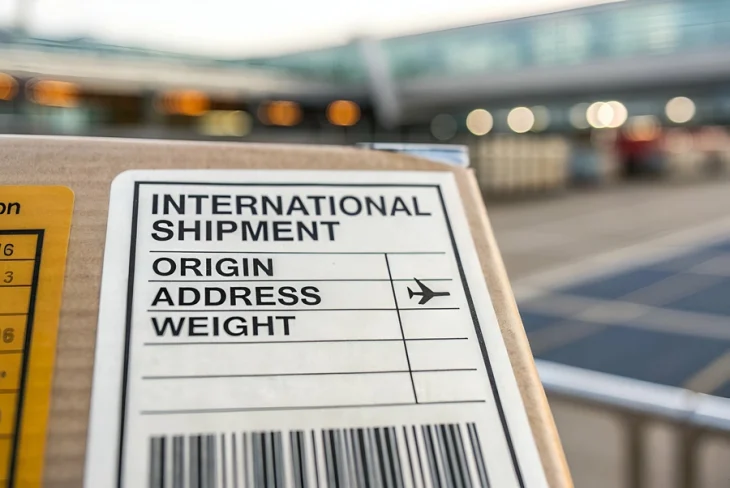
Sending parcels abroad isn’t always as straightforward as it first seems. Paperwork, packaging rules, country-specific restrictions, and cost surprises can all get in the way. If any part of the process goes wrong, it can lead to delays, extra charges, or unhappy customers chasing answers. The good news is that most problems are easy to avoid with a bit of know-how.
It’s surprisingly easy to get address formats wrong, especially when they vary so much from country to country. A missing postcode, the wrong building number, or even using an unfamiliar format can result in a parcel being delayed or sent back.
To reduce the risk, check the destination country’s address format before shipping. Some countries also use specific region or province codes, so it helps to confirm these details with the recipient if possible.
Customs declarations are a must for international deliveries. If the information provided is vague, incorrect, or incomplete, parcels can be held at the border, heavily taxed, or returned.
Always provide a clear and accurate description of the contents and the correct value and purpose (such as ‘sale’, ‘gift’, or ‘return’). Avoid using generic terms like “clothing” or “accessories”—the more detail, the better.
International shipping charges are based not just on weight but also on parcel size. This means that lightweight but bulky packages can end up costing more than expected.
Before sending, check both the actual and volumetric weight (which takes dimensions into account). Most couriers have calculators online that show exact pricing, helping avoid surprise costs later.
Not all packaging works for all journeys. Fragile items in soft bags, branded packaging that draws attention or parcels without enough padding can all lead to problems. Some items may even be refused entry if the packaging doesn’t meet certain standards.
Aim for strong, neutral packaging that protects the contents and complies with courier guidelines. Adding a second internal label with the address details can also help if the outer one is damaged.
Each country has its own list of prohibited imports. It’s not always obvious – everyday items like batteries, cosmetics or food products can be restricted in some places.
Always check the rules for the destination country before shipping. Most courier websites include searchable lists of banned or limited items. If there’s any doubt, it’s better to hold off and double-check.
Going for the cheapest delivery option can be tempting, but international parcels can travel a long way through many hands. If tracking isn’t included, it’s much harder to find out where a parcel has gone if something goes wrong.
Whenever possible, use a tracked service, especially if the item is valuable or time-sensitive. Insurance can offer extra peace of mind and make it easier to claim for lost or damaged parcels.
Many international delivery issues can be avoided with a few careful checks and a bit of planning. Whether double-checking the address format or ensuring customs paperwork is complete, a few small steps can save a lot of time and hassle later. That means fewer complaints, less chasing and a much smoother experience.